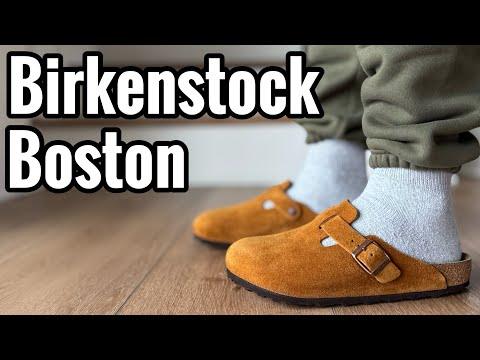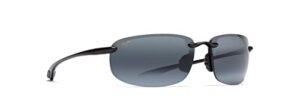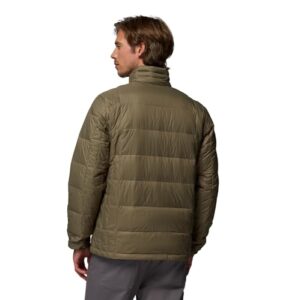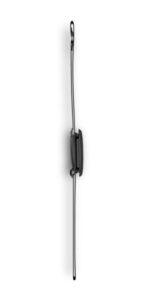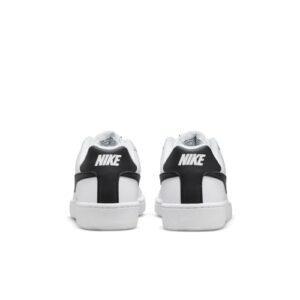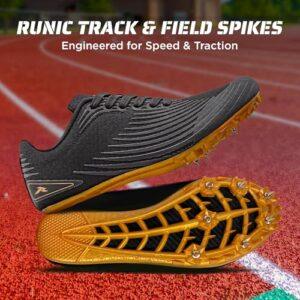Are you struggling to find the perfect fit for your clogs? You’re not alone.
Wearing clogs that don’t fit right can cause discomfort and even pain, making it hard to enjoy their style and benefits. But how exactly are clogs supposed to fit? Getting this right can change the way you walk, feel, and move throughout your day.
You’ll discover simple tips to ensure your clogs fit perfectly, so you can step confidently and comfortably every time. Keep reading to unlock the secret to happy feet!
Choosing The Right Size
Choosing the right size for clogs is key to comfort and support. Wearing the wrong size can cause pain and blisters. Proper fit helps you enjoy your clogs all day without discomfort. Focus on accurate measurements and understanding your foot shape.
Measuring Your Feet Accurately
Start by measuring your feet at the end of the day. Feet tend to swell, so this gives a true size. Use a ruler or tape measure to check length and width. Measure both feet, as one may be larger. Choose the size that fits the larger foot.
Considering Width Variations
Feet are not just long, they have different widths too. Some clogs come in narrow, regular, or wide sizes. Know your foot width to avoid tight or loose shoes. Too narrow causes pinching; too wide means less support. Pick clogs that match your foot width for comfort.
Trying Different Brands
Brands size clogs differently. One size in one brand may feel smaller or bigger in another. Try on several brands to find the best fit. Walk around in the clogs to check comfort and fit. Choose the brand that feels right for your foot shape and size.

Credit: www.jonesbootmaker.com
Key Features Of A Proper Fit
Understanding the key features of a proper fit helps you choose the best clogs. A good fit keeps your feet comfortable and healthy. It stops blisters, pain, and slipping.
Heel And Toe Room
Clogs should have enough space in the toe box. Your toes need room to move and wiggle. Too tight, and toes get cramped. Too loose, and feet slide forward. The heel area must fit snugly but not squeeze.
Arch Support Placement
Arch support is important for foot comfort. It should match the natural curve of your foot arch. Proper support reduces strain and fatigue. Clogs with good arch support help keep your balance.
Secure Heel Fit
The heel must feel secure without slipping. A loose heel causes rubbing and blisters. A tight heel prevents the foot from moving inside the shoe. Secure fit ensures safe walking and standing all day.
Material Impact On Fit
The material of clogs plays a big role in how they fit your feet. Different materials feel and behave differently. This affects comfort, support, and how the shoe shapes to your foot. Understanding these differences helps you pick clogs that fit well from the start.
Leather Vs Synthetic
Leather clogs often fit better over time. They stretch and mold to your feet. Synthetic clogs keep their shape more. They may feel stiff at first but stay consistent. Leather feels soft and natural. Synthetic can be lighter and easier to clean.
Breathability And Flexibility
Leather allows air to pass through. This keeps feet cooler and dry. Synthetic materials may trap heat and moisture. Flexibility also varies. Leather bends with your foot’s movement. Some synthetics are rigid, making walking harder. Choose material based on how your feet feel.
Break-in Periods
Leather clogs usually need time to soften. This break-in period can last days or weeks. During this time, expect some tightness or pressure. Synthetic clogs often need less or no break-in. They fit closer to their original shape. Knowing this helps you prepare for comfort.
Common Fit Issues And Fixes
Clogs are popular for comfort and style. Yet, many face fit problems. Knowing common issues helps you enjoy your clogs more. Small fixes make a big difference in comfort and wear.
Dealing With Slippage
Slippage means your heel slips out while walking. It causes discomfort and affects balance. Try wearing thicker socks to fill space. Adding heel grips inside clogs stops slipping. Check if the clog size is too big. Consider a half size smaller for a snug fit.
Avoiding Pinching And Blisters
Pinching hurts the sides or top of your foot. Blisters form from friction and pressure. Break in new clogs slowly to soften the material. Use moleskin or blister pads on hot spots. Adjust straps or laces to reduce tightness. Choose clogs with a wider toe box to prevent squeezing.
Adjusting For Swelling Feet
Feet swell during the day or in warm weather. Tight clogs cause pain and poor circulation. Wear clogs in the afternoon for the best fit. Choose styles with adjustable straps for extra room. Stretch clogs gently with a shoe stretcher or thick socks. Consider clogs made from flexible materials that adapt to foot changes.
Tips For Testing Clogs At Home
Testing clogs at home helps ensure they fit well before wearing them out. This process lets you feel how they support your feet. It also shows if they stay comfortable after walking.
Walking Techniques
Walk on different surfaces like carpet and hardwood floors. Take slow, steady steps to notice how the clogs feel. Try walking uphill or downstairs to check stability. Pay attention to any slipping or pinching.
Checking Comfort Over Time
Wear the clogs for at least 30 minutes inside your home. Notice if any part of your foot feels sore or tight. Stand and sit to see how the clogs support your feet. Comfort that lasts means a good fit.
Using Socks Or Insoles
Test clogs with the socks you usually wear. Socks can change how snug the clogs feel. Add insoles if you need extra support or cushioning. Make sure the clogs still feel roomy and not tight.

Credit: www.jonesbootmaker.com
Maintenance For Long-lasting Comfort
Proper maintenance keeps your clogs comfortable and durable. Regular care prevents wear and tear. It also helps your clogs fit better over time. Small efforts extend their life and comfort. Here are key steps for maintaining your clogs.
Cleaning And Conditioning
Clean your clogs often to remove dirt and sweat. Use a soft brush or cloth. Mild soap with water works well. Avoid soaking your clogs completely. Let them air dry away from heat. For leather clogs, apply a conditioner to keep the material soft. This stops cracking and stiffness.
Replacing Insoles
Insoles wear out faster than the clogs themselves. Replace them if they feel hard or lose support. New insoles restore cushioning and comfort. Choose insoles made for your clog type. This simple step improves fit and reduces foot pain.
When To Retire Your Clogs
Clogs need replacement when they no longer support your feet. Signs include worn soles or holes. If the shape changes and causes discomfort, it’s time to retire them. Using old clogs can lead to foot problems. Keep an eye on their condition for safe wear.

Credit: www.jonesbootmaker.com
Frequently Asked Questions
How Tight Should Clogs Fit On Your Feet?
Clogs should fit snugly but not too tight. They must hold your foot securely without causing discomfort or pinching. A proper fit ensures comfort and prevents blisters or chafing during wear.
Can Clogs Be Worn Without Socks Comfortably?
Yes, clogs can be worn without socks if they fit properly. Properly fitted clogs allow air circulation and avoid friction. Always check for smooth interiors to prevent irritation when barefoot.
Should There Be Space At The Toe In Clogs?
Yes, there should be about a half-inch space at the toe. This allows natural foot movement and prevents toes from rubbing the clog front. Proper toe space ensures comfort during walking.
How To Know If Clogs Fit Your Heel Correctly?
Your heel should feel secure without slipping out while walking. A good clog fit grips the heel comfortably to avoid blisters. Avoid clogs that are too loose or too tight at the heel.
Conclusion
Choosing the right fit for clogs is key to comfort and support. Clogs should feel snug but not tight, with enough room for your toes to move. A good fit helps prevent blisters and foot pain. Always try them on and walk around before buying.
Remember, well-fitted clogs keep your feet happy all day long. Take your time to find the perfect pair that suits your feet well. Comfort matters most in every step you take.

Madison Clark is a footwear expert and the voice behind MyStyleGrid.com. She specializes in honest shoe reviews, style tips, and practical guides to help readers find the perfect pair for any occasion. With years of experience in blogging and content creation, Madison makes footwear knowledge simple, stylish, and easy to follow.

